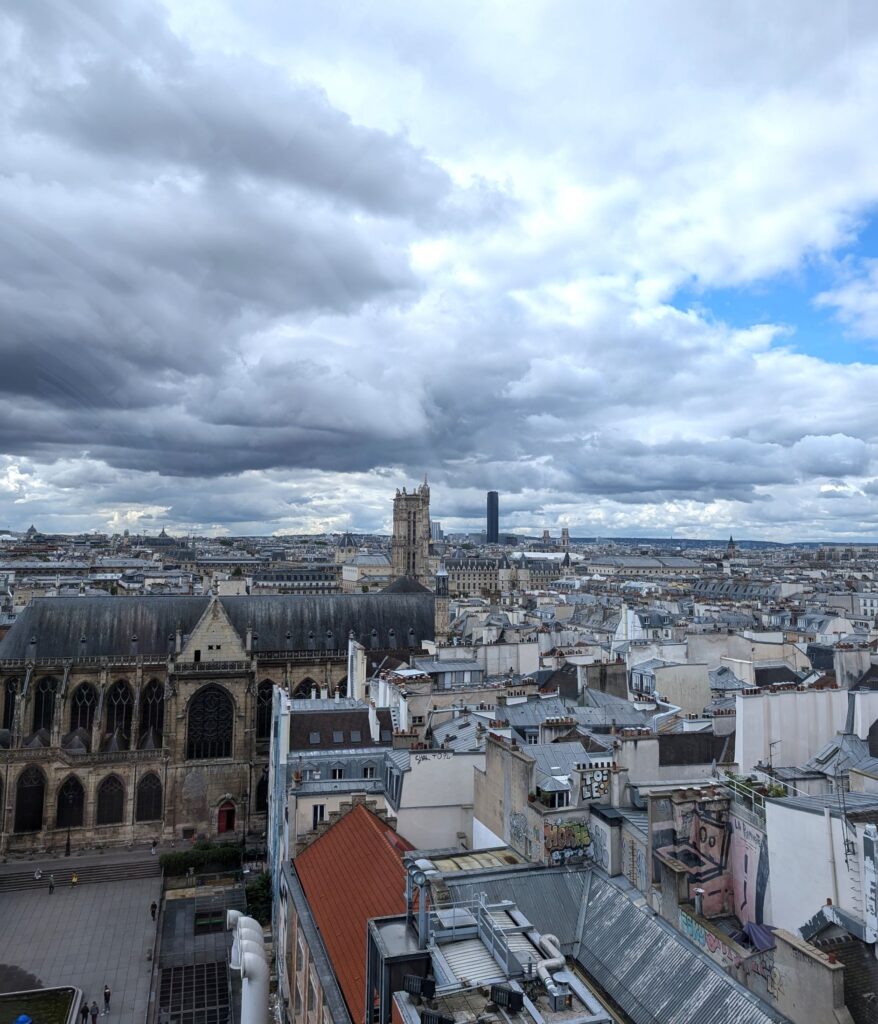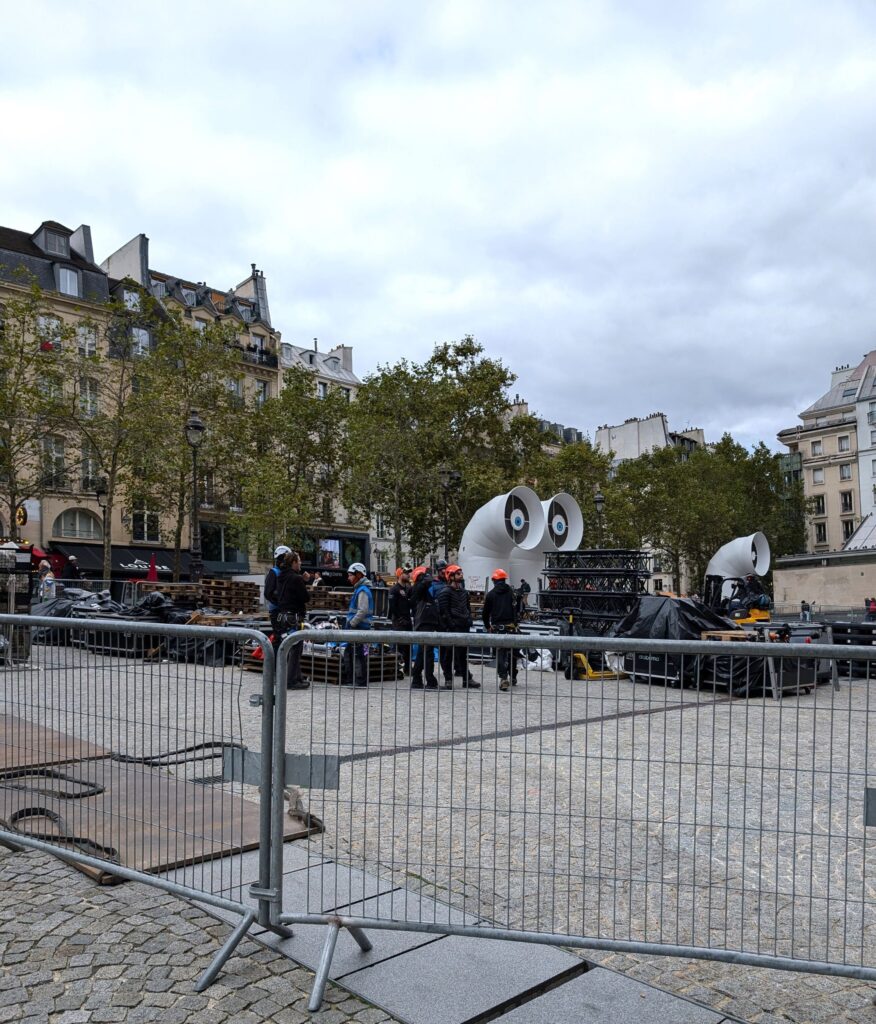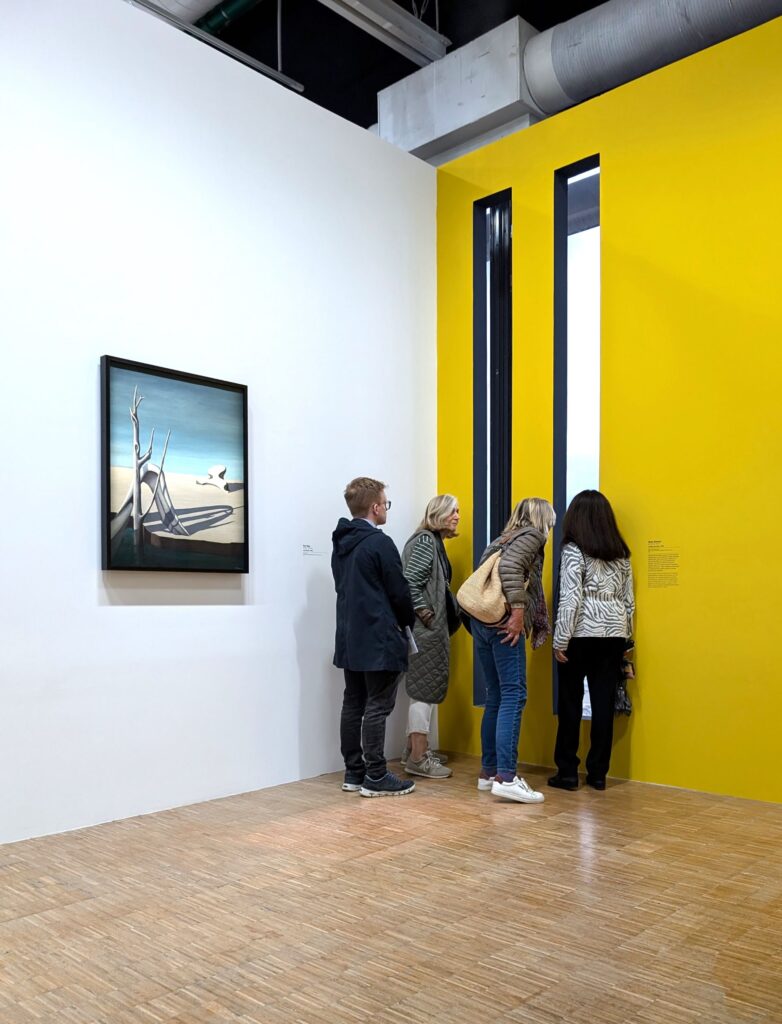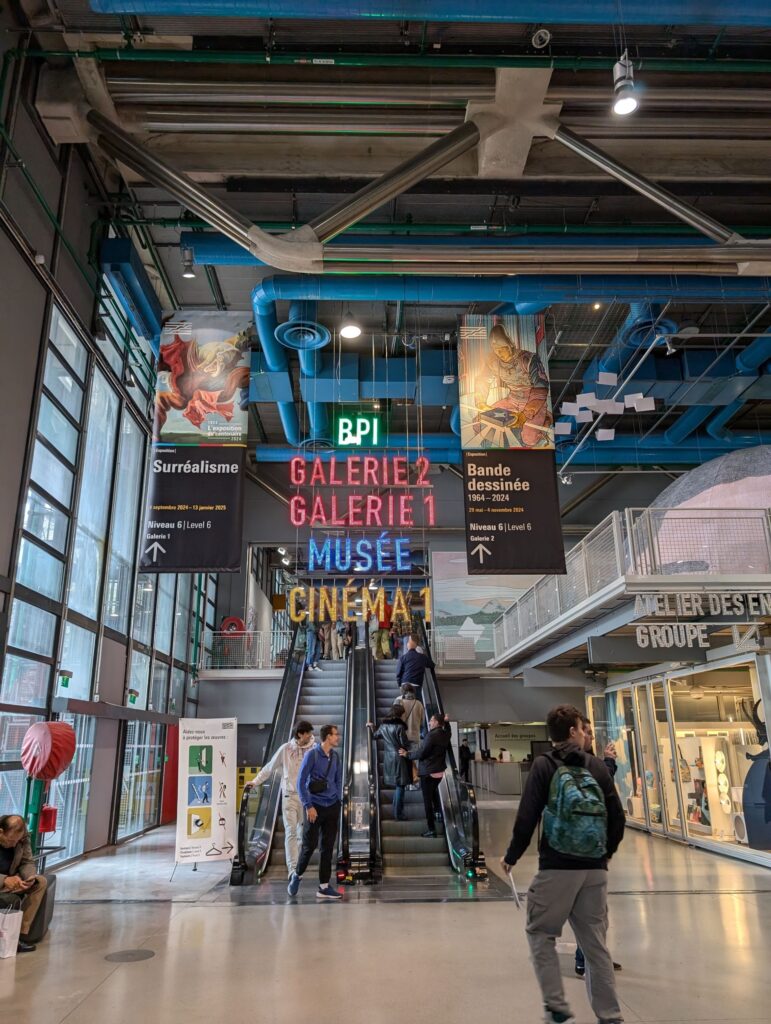Around level 4 of the 6-story escalator of the Centre Pompidou, I realized it had been a long time since I’d visited a high place in Paris.
It was a mantra when my sister Christine and I traveled in Europe. See a church, eat a good meal, visit somewhere old and climb to a high place. After my family and I arrived in Paris in 1996, we saw most of the high places of the city. My favorite was the Tour Montparnasse, because we could brag that this mostly unknown skyscraper offered better views than the Eiffel Tower, with no lines.
But I was really struck this time by the view from the ever-rising Pompidou escalator, affixed to the outside of the building. Maybe because I was just coming off my first case of COVID and was starved for stimulation. Or because I’m only in Paris part-time now. But especially because the low, moody clouds of September added so much to the scene. (The Tour Montparnasse, also sponsored by then-President George Pompidou, is visible in the distance).

I was at the museum to see a major exhibit on Surrealism, which is celebrating its 100th anniversary this year with shows around the world. The timing was also important because the Pompidou is in the process of closing for renovations, and won’t open again fully until 2030.
The front courtyard is already filling up with equipment and crew, seemingly ready to jump in as soon as the last Magritte fan leaves the building. (The exhibit runs until January 2025.)

The exhibition was good, if way too crowded. I wasn’t the only visitor fascinated by the sky outside.

The design of the museum – basically inside-out – also ensured that every view was framed by struts or railings.

I feel the same way about Surrealism as I do about the Pompidou: I like it, without really being able to say why and even though it’s weird.

Photo: Charles Trueheart
It could have used fewer words in general – much was made of the display of André Breton’s original Surrealism Manifesto, for instance– and more of those words should have been in English.
But this 47-year-old museum was the perfect place for the exhibit. What could be more surreal than having to find your way to the gallery spaces by following signs to a movie theater?

It’s part, probably, of the Pompidou’s multicultural and village-square mission. It was conceived as a way to bring people together to read, watch, discuss and visit.
By the end, even though the crowds had thinned out, I was feeling overwhelmed by the twisted and the unpleasant.

Photo: Charles Trueheart
So I settled in a café across from the Pompidou for a lunch of comfort food and a view of the escalator.


Thanks for your post. You being in Paris in autumn reminds me of the the old song “I love Paris …..”. We visited there regularly but always in the summers as that’s when my wife had hollidays. Now that we are retired regrettably older age issues and costs impede. But we shall see.
I hope you can return, and thank you!
Loved your Pompidou/Surrealism chapter. Nancy and I saw a major Surrealism exhibition there about 20 or 25 years ago (with the Siercks!!) which was memorable. We still have the exhibition poster in our bathroom in Brooklin. Love to you and Charlie.
Jim
How great to have that historical context, thank you!